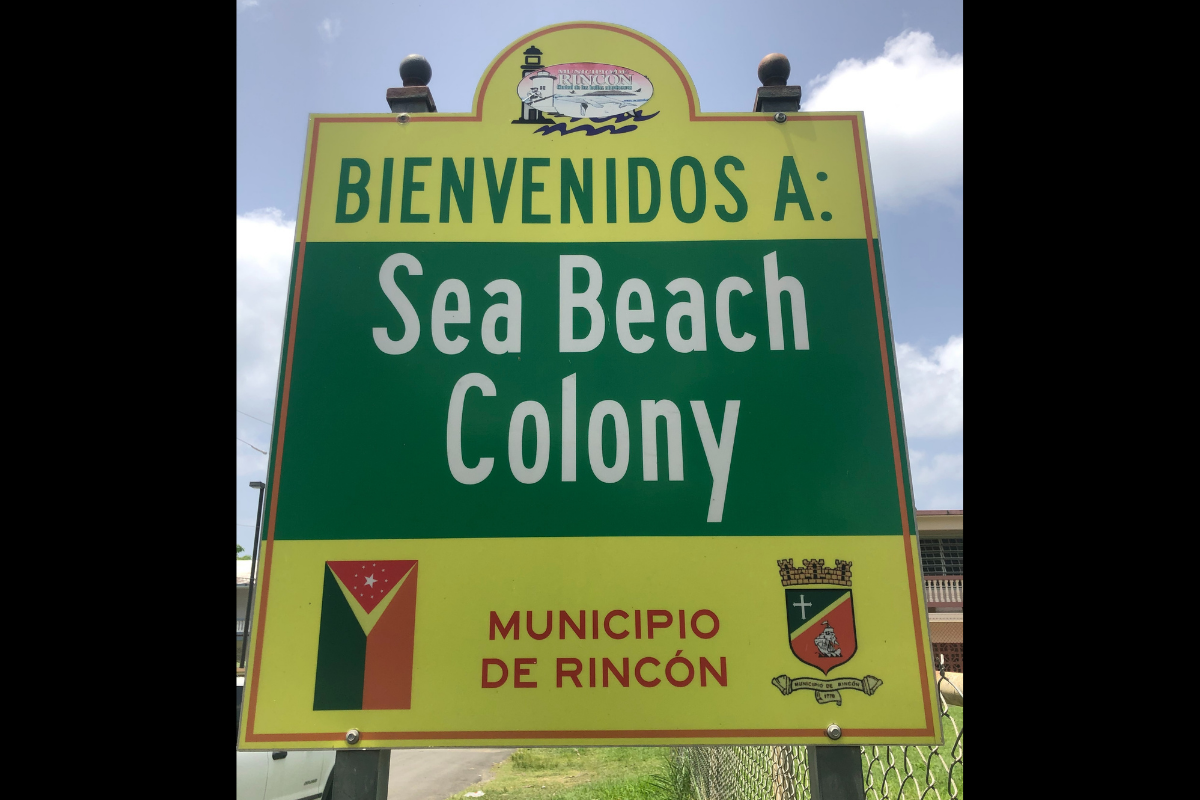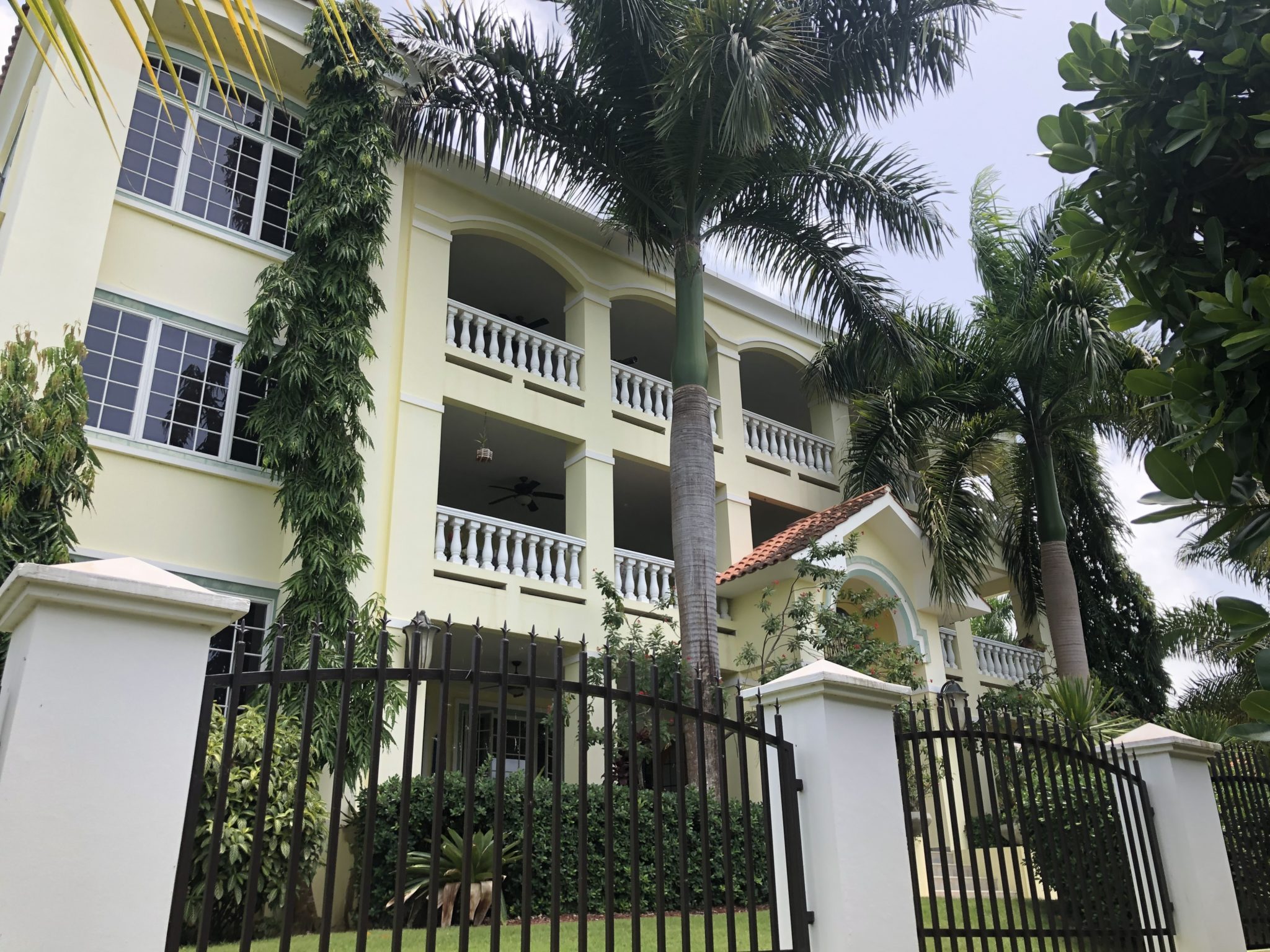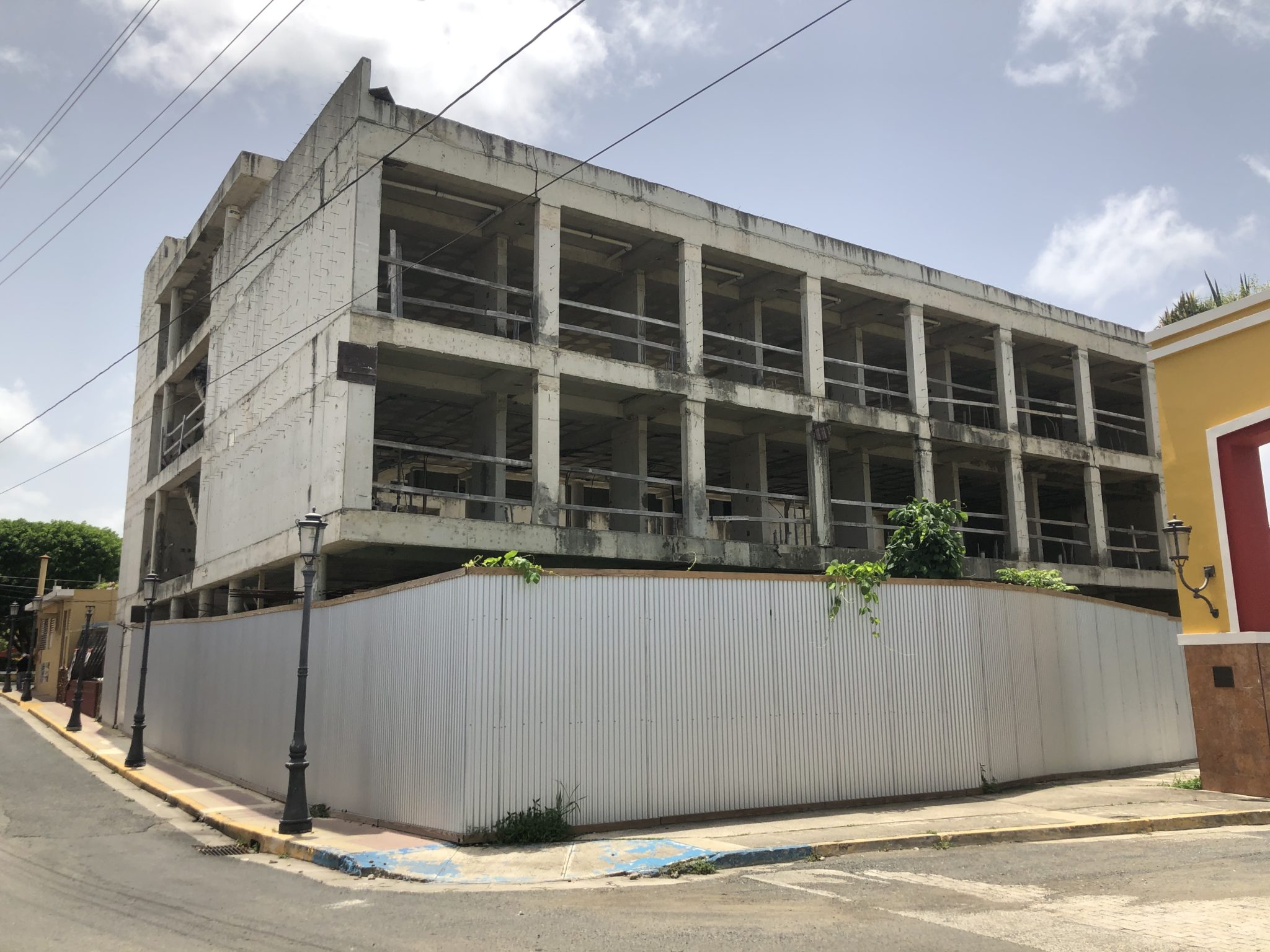

(Photo by Hugo Marín González)
RINCÓN, Puerto Rico — The problem in this northwestern town is serious: tourism brought in money, investors from the U.S. saw the potential and acted according to their nature. The limited space and number of houses are primarily being used to accommodate an overwhelming number of visitors and part-time residents who although do not live there permanently, are literally taking over and changing the town’s local cultural identity.
“While generational residents keep being displaced, without any government legislation to regulate the housing problem now, soon there will not be any generational native residents left in their town,” Ada Irizarry, an attorney from Rincón, said.
Rincón is a scenic municipality well-known by surfers worldwide. It measures 15 square miles with close to 1,500 permanent residents, 9% of them American settlers. In 1960, many Americans first arrived and built a nuclear superheater reactor facility, a project they abandoned in 1969. The beach next to the nuclear facility is beautiful and has waves that can be surfed. Word spread quickly, and in 1968, American surfers celebrated a surfing contest that kicked off a modest but solid tourism industry, mostly managed by locals.
https://www.youtube.com/watch?v=Gy6vTH71izg
Contrary to popular belief, the name of the town does not refer to its location on the northwest corner of Puerto Rico, but rather honoring its founder, Gonzalo Rincón, a freed slave who acquired some land from his former master and allowed poor families to settle there.
Around 2000, two unknown surfers from California appeared in Rincón and intervened during a dispute between local developers and fishermen who objected to the construction of a hotel in an area where they were getting their fish, fearing that a hotel there would hinder their source of income. Based on ecological conservation and the existence of a coral reef in the exact location (which is also a popular surfing destination), somehow the two surfers convinced the fishermen to cease using their own community beach to make a living. Through a lobbying process, they were also able to persuade lawmakers into designating the surfing spot into a natural reserve, action which stopped the hotel project, and in 2004 the area was officially designated as the Tres Palmas Natural Reserve. Today, a house rental adjacent to the reserve can cost $1,175.00 a night in a town where 42% of the population lives under the poverty level (the average income per capita is $11,650 a year.)
The establishment of the natural reserve was celebrated as a community victory and viewed by many as a tangible example of the collaborative efforts between local residents and American surfing tourists. The two surfers, however, were not just two random nature lovers who wanted to save Tres Palmas. They were two millionaires with a carefully crafted development plan—their names were Leon Richter, now president of the Surfrider Foundation Puerto Rico Chapter, and Dr. Chad Nielsen, founder and CEO of Surfrider Foundation, an international advocacy group based in San Clemente, California.
Before Tres Palmas was designated a natural reserve, Nielsen had contracted an economist professor, Dr. Linwood Pendleton from the University of Southern California, to perform a study on the financial potential of the surfing beaches of Rincón. The report was titled “A Preliminary Study of the Value of Coastal Tourism in Rincón” and published in 2002.
The report analyzed the economic value of Rincón’s beaches. It determined how a tourism fiscal model constitutes a multi-million dollar asset, with the potential to exceed the capital gains of all the existing industries at the time combined. In it, Pendelton also warned of the possible repercussion a development plan could have on those who lived there.
The increased demand by the tourism sector for goods and services can additionally impact the local economy by raising prices for local consumers without simultaneously raising income,” the report said.


Beachfront properties were historically limited poor fishing family shacks, mostly made out of wood. That traditional type of structure has been replaced by luxurious condos and extravagant mansions, like this one located right at the Tres Palmas Natural Reserve. (Photo by Hugo Marín González)
Pendleton’s study showed the total existence of six hotels at the moment of his 2002 investigation. In conversation with Waleska Pérez, director’s assistant at Rincón’s Office of Tourism, she said her office conducts periodic visual inspections and has estimated that modern-day Rincón’s lodging infrastructure fluctuates between 70 to 80 hotel-like facilities, excluding approximately 1,000 Airbnbs. She also said that although difficult to calculate, the number of yearly visitors and part-time residents is around 100,000 people a year.
Mariel Muñiz, originally from Barrio Puntas in Rincón and who self identifies as a person displaced by colonialism, remembers American surfers in Rincon during the ’70s and ’80s.
“They were simple people, hippies who just wanted to smoke weed and enjoy the beach. They were relatively friendly and respectful of the environment. They were buying little houses and fixing them, but they were not causing any problems,” she said. “These days, they are not hippies anymore. I imagine that over the years, globalization attracted investors and now you have capitalist hipsters who still want to smoke weed by the beach but in big concrete structures. If you still live there [in Rincón], your work options are mainly in tourism, now owned by gringos or moving to another town.”
Not far from Tres Palmas, there is the exclusive housing complex named, Dos Ceibas. As part of the advertisement, their website highlights the growing American community in Rincón with new residents opening new businesses, increasing the number of amenities offered to themselves. It also explains how a $650,000 investment at Dos Ceibas could yield an extra 73% return over a comparable investment with similar cash flow in New York. According to the website, the annual flow of visitors and new residents have been able to sustain a rental housing market that is no longer seasonal. High-quality vacation rental properties have seen occupancy rates in excess of 50% throughout the year.
This project was developed by Surfrider president Leon Richter, and it is now sold out.
No native generational residents are living in the Tres Palmas area anymore. In contrast, this investigation found that Richter has an oceanfront mansion blending with the natural reserve limits and a restaurant. With his partner Allison Richter, they manage a series of vacation houses there. One of their properties, named “R House” (a one-bedroom), rents for $254.00 a night, while, the average price for a three-bedroom house in the neighboring town of Aguada is $400 a month.
The influx of wealthy families into the low-income town has increased the demand and price of housing, which is attractively affordable for rich Americans, forcing the disadvantaged family to move to another town where they can live according to their social status. The humble waterfront homes, which formerly belonged to families of local fishermen, have been replaced by Airbnbs, luxury apartments, and extravagant mansions.
Betsy Bonet, a municipal legislator in Rincón for Puerto Rico’s Independence Party, explained how many people (generationally from the municipality) are having a very difficult time finding not only affordable housing but rather any housing in their own town, resulting in displacement.
“Tourism has had an impact, a rise in the cost of living and housing. There is a very low availability of long term rental for families, the very few that exist are very expensive, they all are mostly vacation rentals,” Bonet said.
The socioeconomic evolution, the cultural and physical changes of barrios, shops, and meeting places are elements that have also indirectly led to displacement. Some people no longer feel a connection to Rincón. Many of the places that meant something to them were transformed into amenities that are not designed or intended for them.
A block away from the town’s plaza, there used to be a natural water spring that supplied clean drinkable water to local residents. It was known as “Ojo de Agua.” The spring was considered a historical staple of their town, but in 2016, it was sealed and covered with concrete to make space for a new hotel, now an abandoned unfinished construction, irreparably damaged by Hurricane María.


On this corner in Rincón, there used to be a natural water spring that supplied people with clean drinkable water during times of scarcity. It also served as a popular meeting place for local residents. In 2016 it was covered with concrete to allow the construction of this hotel, which to this day remains unfinished. (Photo by Hugo Marín González)
In 2012, the Washington Post published an article in which Nielsen of the Surfrider Foundation openly spoke about his economics experiment and how he was able to “put a price tag on a beach at the village of Rincón.”
His experiment led to a modern financial model named “Surfonomics,” and Nielsen is credited as the creator of a concept. A financial model that without a doubt has proven to be successfully profitable for new American new residents, but not for the people who have lived there for generations.
Hugo Marín González is a Puerto Rican linguist and a journalist. Twitter: @razalibre.



I’m a Black “gringo” relocating to PR with my, whose mother is from Rincón. I respect and love Boricua culture. The efforts by some to remake Rincón in their image is evident. I’ve met gringos who have been living here for a decade, and still can only utter a few key phrases in Spanish. When we were here back in December, the sign for Playa Escalera said “Steps Beach”. My wife and I were upset by that. When we came back this time, it was back to Spanish. Fortunately, someone is not sitting back accepting the gringofication.
I really cant stand white americans is your mom puerto rican? If she is then you are puerto rican.Anyway The thing about puerto ricans is that they are afraid since they are territory of USA they kill each other but dont stand up against what this gringos are doing and they dont even want to learn spanish specially whites that they are always telling us to learn english when living in USA so they come over here and dont want to learn spanish.We have to do soemthing about this.Who knows if they start with their practices of racism that they have in USA
I’m a white american. Anyone that goes there and doesn’t want to learn your language is ignorant and hurting themselves. I’ve been studying spanish online, but to learn spanish in your native tongue requires being there and speaking with the locals. It takes awhile. Please don’t judge all of us because of some ignorant gringos. Karma will come back to them.
La primera colonia dentro de la COLONIA puede que sea Puntas con un portón privado a lado de la Parada Muñoz y otro al lado de Santana Caro y así arropando la PR413! God help us all!
PR is going to go from 3 million to 2 million people in the next 25 years. It has the sixth lowest birth rate in the world. Wake up. Much of this town is filled with rich day tripping Puerto Rican’s. If it wasn’t for the outside spending in Rincón it would be another Burger King, fast food, everything fired in grease locale. Can you say obesity and type 2 diabetes?
Upset? Move to Ponce, Maya or 90% of the rest of the island, where every other person, is on some public handout.
Stop kidding yourself. What was Key West, Aspen, Montauk, the Outer Banks, and every other seasonal area like 30 years ago? After Covid this will only accelerate as 1/5 workers chose to no longer live in shiithole cities.
Rincón is a place that will continue to GROW vs the rest of the island that will be hollowed out in one generation. This is because NO ONE is having babies. (No amount of immigration can change this fact.)
Interesting how immigration to you is a one way street. This is a country where anyone can move anywhere. I guess those mainlanders should have said no immigration from PR. You realize a few of those houses you mentioned are owned by people who grew up in PR, made their $$ in the mainland and now want to return home to retire??? If you want I’ll introduce you to a few.
How about an article on how YOU can make this a sustainable economy? Do you realize the eCommerce entrepreneurs, digital workers, and retirees keep this town alive?
You are completely delusional thinking this will remain a fishing village where surf bums can get by. Those “poor fisherman” don’t even ice or refrigerate their catch!
Here is another article topic: Why Puerto Rican’s aren’t getting married (public assistance money goes away when parents are married). I can put you in touch with a person from the economics department who was doing spot checks on people collecting assistance. His favorite story was how a man who was clearly living with his family climbed out a third story building window because he was worried that if found to be living there would have lost that wonderful public /taxpayer $$$ handout.
Luddites like you would rather live in tents than have a solid concrete roof. Speaking of which, you can speak to my neighbors who built their home out of the plywood you’d use in a basement. These are the same ones crying when Maria hit as if they didn’t know building a house of wood in a hurricane zone wouldn’t be a problem.
Let me help you with the economic part.
1. Finish high school
2. Don’t have children out of wedlock
3. Don’t do drugs (and alcohol)
These three things eliminate 90% of socioeconomic problems.
As for Rincón, be prepared for this town to explode with vibrant young people from all over the country who are going to save this town and other parts of the island from financial extinction.
They are creating value vs sucking it dry from handouts and socialist thinking.
You’re right, people are coming. Some of them the diasporicans with that family land you talk of are coming back…but if you think we’re all on your side…baby, you have another thing coming. Tu no sabes lo que viene por ahi….keep testing us…the new to PR residents don’t know Rincon and Aguada’s sordid history….and will find out the hard way…… 🙂
Santeria?
Like Khalid, I am another Afro-Diasporican and I know Racist when I hear one.
Don Q I have some suggestions for you.
1) Curb your racism
2) Get your facts straight (Read a history book)
3) Go back home and gentrify your Alabama Swamp Trailer park, they wont even require you to learn English let alone Spanish
If you and your Klan buddies do those three things, you can truly make America great again. Those three things will make America great again.
We are American citizens and as long as Puerto Rico maintains it current political relations with the US…. I as a Puerto Rican….. don’t see the Americans as Gringos…. and certainly not foreigners…
Especially when at present their are 6 million Puerto Ricans in the US. A few thousand of English speaking citizens should not even be an issue. Especially when their here doing a good thing and only mean well. Let’s not make this an issue…. it’s a sad thing if we even think of it as an issue. We are American citizens and their is no restrictions as far as where we as citizens decide to live and make a living….. Just ask the 6 million of my fellow Puerto Ricans in the US.
Respect Rincon and their natives, leave your Mainland attitude behind, if you want Burger King and living in a condo why come here, you can smoke weed anywhere to cloud your spirit, and please that laid back surfer image, do you think the natives give a shit, they are concerned with putting food on the table for their family.
STOP KIDDING YOURSELFS….Rincon has lots of native rich Puerto Ricans families born and raised there…they never left; well, some did after selling their properties for millions of dollars but quite a few are still there Reeping the benefits outside investment has bought them. Most native-born families in Rincon well understand the value of their lands. People love to migrate and the world continues to rotate, that people know a good investment should not stigmatize what you guys are calling “‘Gringos”… We continue to lie to ourselves saying racism is bad but let’s listen to what we are writing here, please.
Oh, by the way I am a Puerto Rican from Rincon who also owns in Rincon and who’s extended family still lives in Rincon. I am proud of my Heritage in Rincon and if you want a peaceful, quiet loving place to live be it Hispanic, White, Black, Chinese or aliens from Area 51 come to Rincon. Granted space is limited.
Keep Rincon beautiful, respect each other, stop making up racial issues, there are no. DON’T call me Gringa, call me Mami, I am old and fragile, I love to live among the natives and adore the Lation culture, let me support your business with my US earned dollar, stay critical, but remember one hand washes the other, lets be in this together.
I promise I will learn Spanish!
[…] Dorado have been painted as crypto and gentrification havens by outlets like The New York Times and Latino Rebels, with celebrities like Logan and Jake Paul making their way to the […]